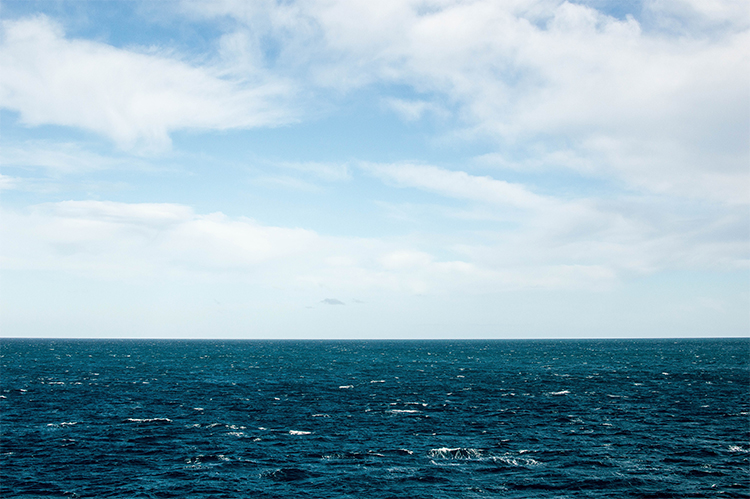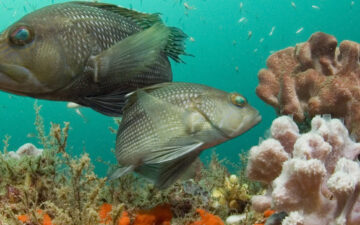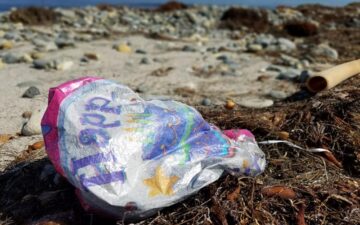Complementarity with existing Areas Beyond National Jurisdiction Institutions
A panel on The BBNJ Process
George Washington University
10 November 2018
The Ocean Foundation is very interested in the conservation of the high seas and how activities are managed. I sit on the Sargasso Sea Commission, we host the High Seas Alliance and the Pew-High Seas fund. And, we are actively participating in the Aspen Institute High Seas Initiative.
The UN General assembly has agreed to develop an international legally binding instrument under the UN Convention on the Law of the Sea.1
It almost goes without saying that as a result of the many sectoral institutions and multiple legal instruments, and high seas freedoms that cooperative governance of activities is much more difficult and challenging than conservation of coastal waters.
This new legal instrument provides an opportunity to address these challenges as we focus on the conservation and sustainable use of biodiversity in areas beyond national jurisdiction (BBNJ). The BBNJ “package” of elements is to include conservation and sustainable use of:
- marine genetic resources (including questions related to sharing benefits among nations)
- measures such as area-based management tools, including marine protected areas
- environmental impact assessments
- capacity building and the transfer of marine technology
At the most recent Aspen meeting in Indonesia, we discussed two main challenges for the cooperative establishment of MPAs on the high seas:
- the potential lack of support or cooperation from nations involved in exploitation of the high seas, e.g., Russia
- the pre-decision against undermining existing institutions in the UNGA resolution, e.g., RFMOs and IMO
Some see the challenges and expectations of the G77 in regard to marine genetic resources have been a drag on the process for the past couple of decades (indicating that a breakthrough on the entire package of BBNJ elements will continue to be very difficult to achieve). On the contrary, having included them means all nations must recognize the G77 expectations regarding MGRs are instead the primary reason why they are in the negotiation in the first place. The conservation agenda that is of most interest to many developed nations (and to environmental NGOs) is secondary or, at best, only of equal importance.
For the purposes of my remarks, I am going to focus on the complementarity with existing ABNJ institutions, particularly Regional Fishery Management Organizations or RFMOs, the title for the various regional entities that govern fisheries activities. The 2015 resolution called for the process of developing a new instrument that does “not undermine relevant existing legal instruments and frameworks and relevant global, regional, and structural bodies active in the ABNJ.” The phrase does “not undermine” was a creative ambiguity to get the UN General Assembly resolution to the floor and passed. That ambiguity was fine for that moment.
However, to go forward, I think we can all agree that defining how to conserve biodiversity in a manner that does “not undermine” will play a key role in defining the scope and function of any new legal instrument, as well as the cooperative decision-making of any new institution (if any) created by the new instrument. We need to give these phrases meaning, and for now there is no consensus on how to conserve biodiversity and not undermine existing institutions. We need legal substantive standards and a cooperative process or approach to be set out in a legal instrument consistent with and implementing the Law of the Sea Convention (LOSC) framework of the United Nations (UN). This is particularly relevant to existing RFMOs and the new BBNJ instrument, the connections between which have not yet been resolved.

Improving the conservation of biodiversity beyond national jurisdictions (BBNJ) through MPAs, EIAs, planning and cooperation does not inherently undermine existing institutions. To the contrary, cooperation among nations on how to cooperatively implement the duty to protect the marine environment under the LOSC may best be accomplished through the involvement of these existing sectoral institutions In fact, the integration of the over-arching UN Sustainable Development Goals into this new legal instrument and the mandates of existing sectoral institutions will further the conservation of biodiversity in a sustainable manner.2 The challenges of conservation of biodiversity that might be affected by direct (e.g. fishing & whaling)3 and indirect (shipping and seabed mining) regimes may cooperatively be addressed through cooperation of existing institutions and a new one focused on protection.4
To accomplish this cooperation, let’s talk about how we might interpret the phase does “not undermine.” Treaties are interpreted in good faith in accordance with the ordinary meaning to be given to the terms of the treaty. In this case, it is clear the term is creatively ambiguous to reach an agreement and provide some latitude in negotiations. Article 32 of the Vienna Convention5 allows in the instance of ambiguity that a “[r]ecourse may be had to supplementary means of interpretation.” We should also be mindful of its object, purpose and the context, i.e., a UNGA resolution. This may give us more room or latitude for new creative solutions and which constructively involve the existing institutions.
In the Old World Order, “undermine” meant to cripple or debilitate, or literally hollow out a foundation. It was the eroding of a building or institution from below. It is, in its origin, a term describing a tried and true technique for breaching, entering and taking a castle or military stronghold. And, because we are talking about the need for a new comprehensive global regime for protection of BBNJ, the transfer of an “Old World Order” definition to the “New World Order” seems appropriate. Thus, while preserving or utilizing the existing foundations provided by these existing sectoral institutions, we build a new institution that is connected in a manner that facilitates cooperation and use of existing sectoral expertise to address the challenges of a new structure that conserves the biological diversity and uses in a sustainable manner for present and future generations.
An argument can be made that existing high seas management institutions are more akin to these castles or military strongholds than not. What we are concerned about is the mandate for each—the legal foundation on which they stand and from which they govern within their purview. We must not frustrate each institution’s ability to operate nor erode the foundation on which each stands.
Using this historic analogy, we can see that for an existing legal institution to be undermined would require substantial change that resulted in the eroding of its foundational elements.
Undermine is thus a strong word. To undermine is a serious threat. Yet the threat to existing institutions does not come from a new BBNJ instrument. It is the well-documented failure to conserve the ocean’s health and biodiversity that will erode or hollow out the foundation of the RFMOs and even the IWC– eliminating the healthy and biologically diverse ocean is the foundation from which the fisheries depend and operate. Improved protection of the biodiversity of the high seas is a structural improvement for those existing sectoral institutions.

The new BBNJ legal instrument will, or should, stabilize and restore biodiversity thus strengthening direct regime institutions, making their future and value more secure. This in turn will make them more likely to succeed in sustainably managing our common ocean heritage. Do “not undermine existing institutions” cannot mean silence on sustainability and conservation, including setting standards for creating MPAs, conducting EIAs, and other relevant frameworks. To the contrary, the new instrument and arrangements may strengthen the underlying goals of the existing sectoral institutions through new standards and processes.
Thus, we should include the foundations of the existing institutions and focus on the building of a new agreement and institution. Unless the new BBNJ legal instrument erodes or hollows out the foundation and causes the collapse of the function of an existing legal institution, or directly violates an article of the older instrument, no undermining has occurred. And, that conserving high seas biodiversity also preserves the foundation or subject matter expertise of the RFMOs.
Applying this balanced interpretation is consistent with the LOSC. This balancing is not arguing for ignoring other institutions but rather taking into account the experience and expertise of existing sectoral organizations. It would integrate them by recognizing them and directly setting forth the process involving them in the decision-making process under the new legal instrument. We should create/negotiate a pathway for consultation and coordination, as called for in the 2017 PrepCom report. An example would be the voluntary manner in which the ICCAT consults and coordinates with the Sargasso Sea Commission perhaps becomes a mandatory requirement.
Of course those who worry about the BBNJ agreement undermining existing institutions are as much concerned with process as with substance. That is to say, they want to leave decision-making authority and responsibility with the existing regional and sectoral institutions, and not give any of it to a BBNJ authority. The question is which decisions ought to made at the global level (e.g., at a BBNJ COP) and which are best left to the regional and sectoral institutions? Or if there is to be some interplay in decision-making between levels, how would that work in practice?
The direction given by the UN General Assembly resolution arguably creates an obligation for both old and new instruments to be empowered and collaborative. In other words, this is not an either/or situation in which the new instrument wins and the old instrument is disempowered. But where there is conflict or incompatibility, we are looking to correct an extraction focus and replace it with a sustainability requirement that prioritizes biodiversity and ensures that the overarching UN Sustainable Development Goals are met.

We know that most RFMOs have conservation and extraction management measures.
Management has been relatively well exercised. However, conservation has repeatedly fallen short, if not ignored; management has generally not taken a precautionary, or ecosystems-based approach. In fact, fishing activities may still be the greatest threat to, or have the greatest effect on, marine biodiversity despite decades of RFMO management. Thus, a complementary and not duplicative new framework for conservation will help the RFMOs become more effective, not less.
Does this integration constitute interference? Maybe, but it is not undermining or eroding the foundation. To the contrary it is consistent with and implementing the provisions of the LOSC.
The UN FAO Port State measures agreement and the UN Fish Stocks Agreement offer examples of new instruments to fill gaps in ocean governance. Both sought to avoid harming the “critical effectiveness” of existing institutions, and both succeeded. In those two instances (dare I say precedents), the agreements were about fisheries. Each was capable of adversely affecting the operations of RFMOs, but didn’t. Rather, it was respecting and building upon the existing foundations. Thus, with the new BBNJ legal instrument, the standard for what constitutes undermining should be higher as we are addressing more global values and resources.
Conclusions
The international community’s concern about environmental protection in the ocean and conserving the biodiversity in the high seas has grown incrementally over time. It is okay (and expected) that the new BBNJ instrument to take a stronger approach than the older instruments. The BBNJ agreement should reflect this growing awareness, as well as our improved and increasing knowledge of the ecosystems of the high seas.
Of course, the reality remains that achieving agreement among the parties to actually implement conservation measures will continue to be challenging. However, the existence of the UN General Assembly resolution acknowledges that we need a global solution to the inadequate protections for biodiversity beyond national jurisdiction.
We know there is some urgency to act. There is also an opportunity.
The SDG14 on ocean and the BBNJ negotiations seemed impossible, until they were not.
Mark J. Spalding, President of The Ocean Foundation, is a member of the Ocean Studies Board of the National Academies of Sciences, Engineering, and Medicine. He is serving on the Sargasso Sea Commission. Mark is a Senior Fellow at the Center for the Blue Economy, at the Middlebury Institute of International Studies. In addition, he serves as the CEO and President of SeaWeb, is the advisor to the Rockefeller Ocean Strategy (an unprecedented ocean-centric investment fund) and designed the first-ever blue carbon offset program, SeaGrass Grow. He is also a member of the Pool of Experts for the UN World Ocean Assessment. Mark is an expert on international environmental policy and law, as well as coastal and marine philanthropy.
1 http://www.un.org/ga/search/view_doc.asp?symbol=A/RES/69/292&Lang=E
2 https://www.un.org/sustainabledevelopment/
3 Fisheries are managed by Regional Fishery Management Organizations as intended under UNCLOS, whales are managed by the International Whaling Commission (under The International Convention for the Regulation of Whaling). Shipping activities are managed by the International Maritime Organization (under the Convention on the International Maritime Organization), and the seabed is managed by the International Seabed Authority (under UNCLOS)
4 Obviously high seas fisheries will thus be covered by more than one treaty. The question will then be which one prevails. The Vienna Convention on the Law of Treaties addresses the relationship between successive treaties relating to the same subject matter. Article 30 of the Vienna Convention extends in its scope beyond the notion of conflicts and incompatibility. In that instance, and, if we look to US Supreme Court examples, treaty interpretation jurisprudence would suggest that the treaty later in time is deemed to take into account the existence of the previous agreement(s). Or that “the earlier treaty applies only to the extent that its provisions are compatible with those of the later treaty” (Vienna Convention, Art. 30 (3).
5 Vienna Convention on the Law of Treaties https://treaties.un.org/doc/publication/unts/volume%201155/volume-1155-i-18232-english.pdf







